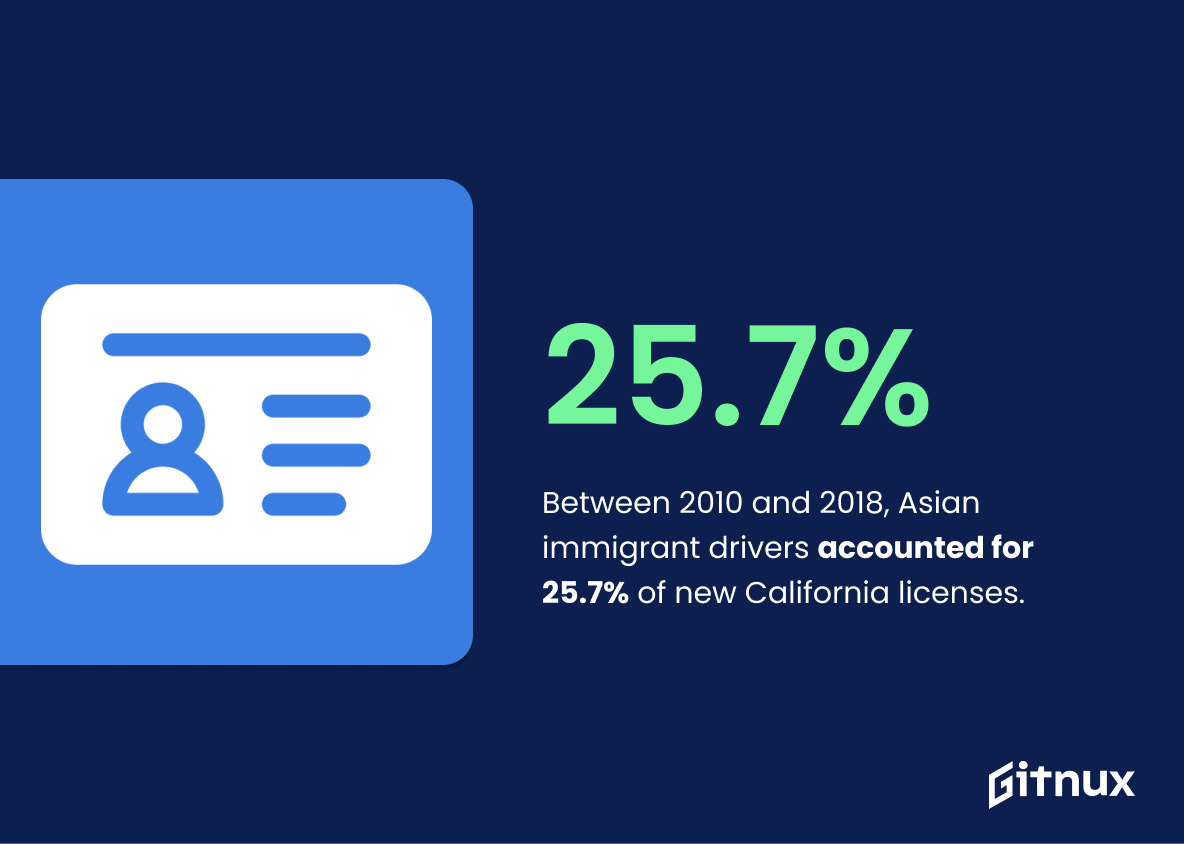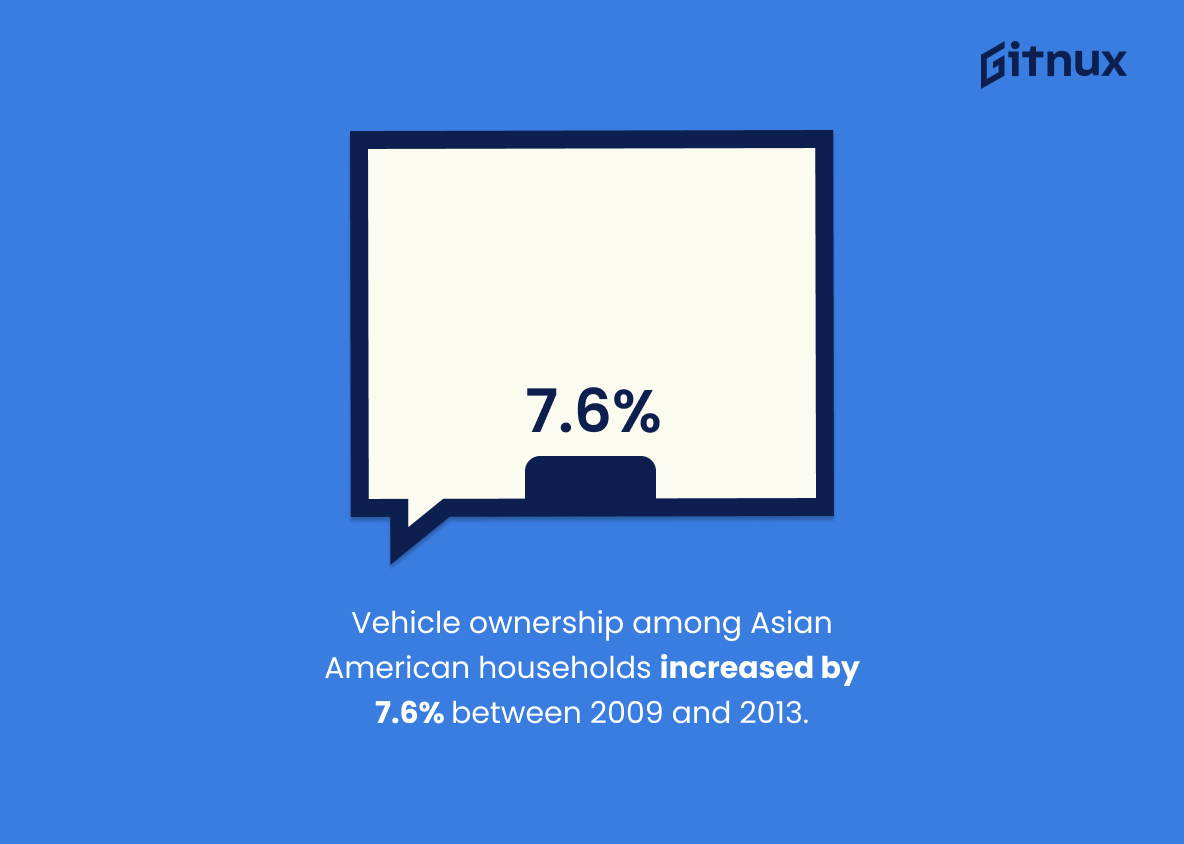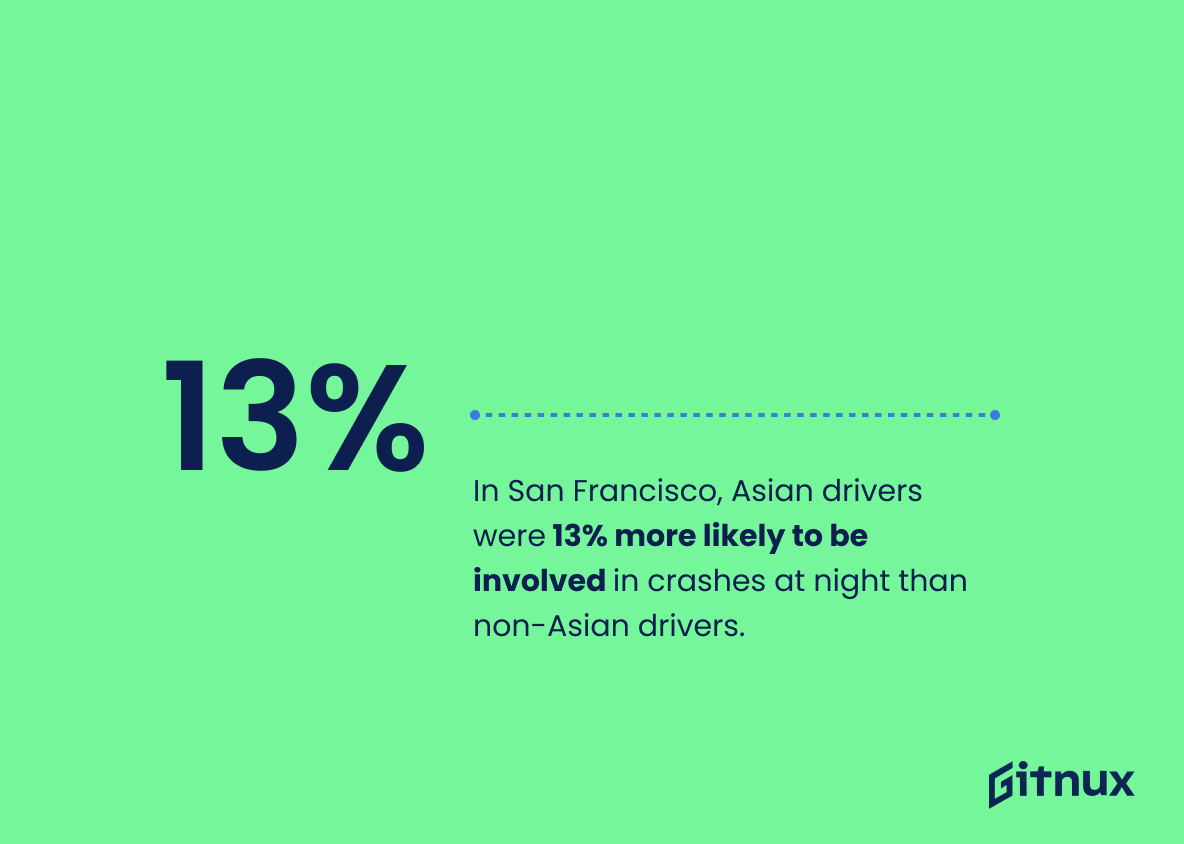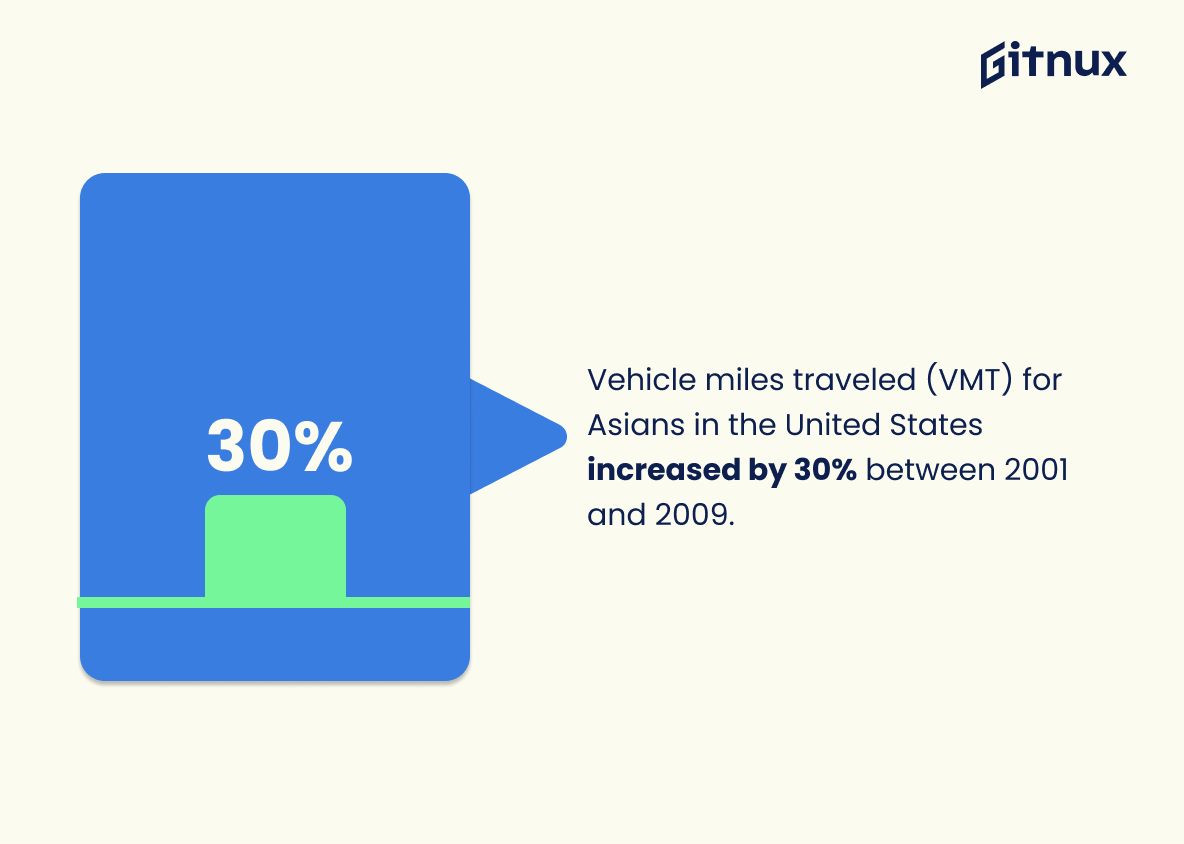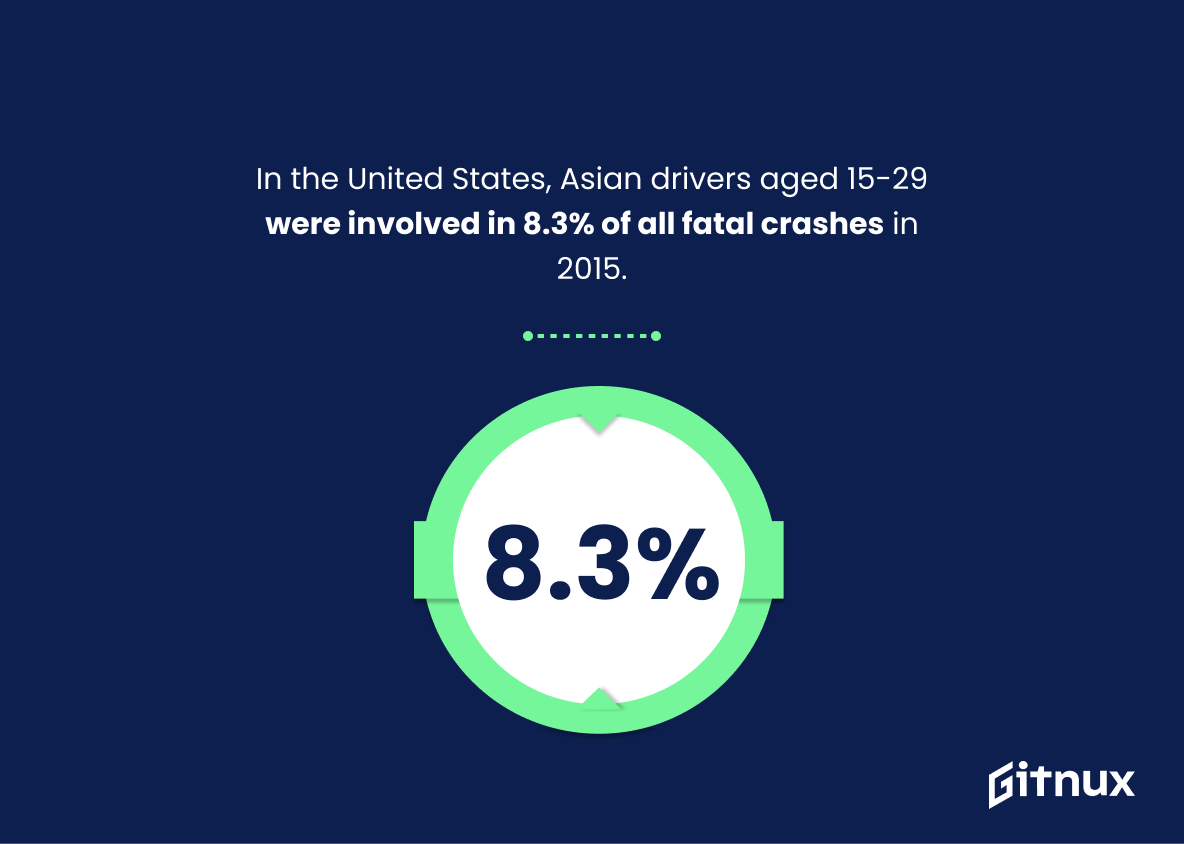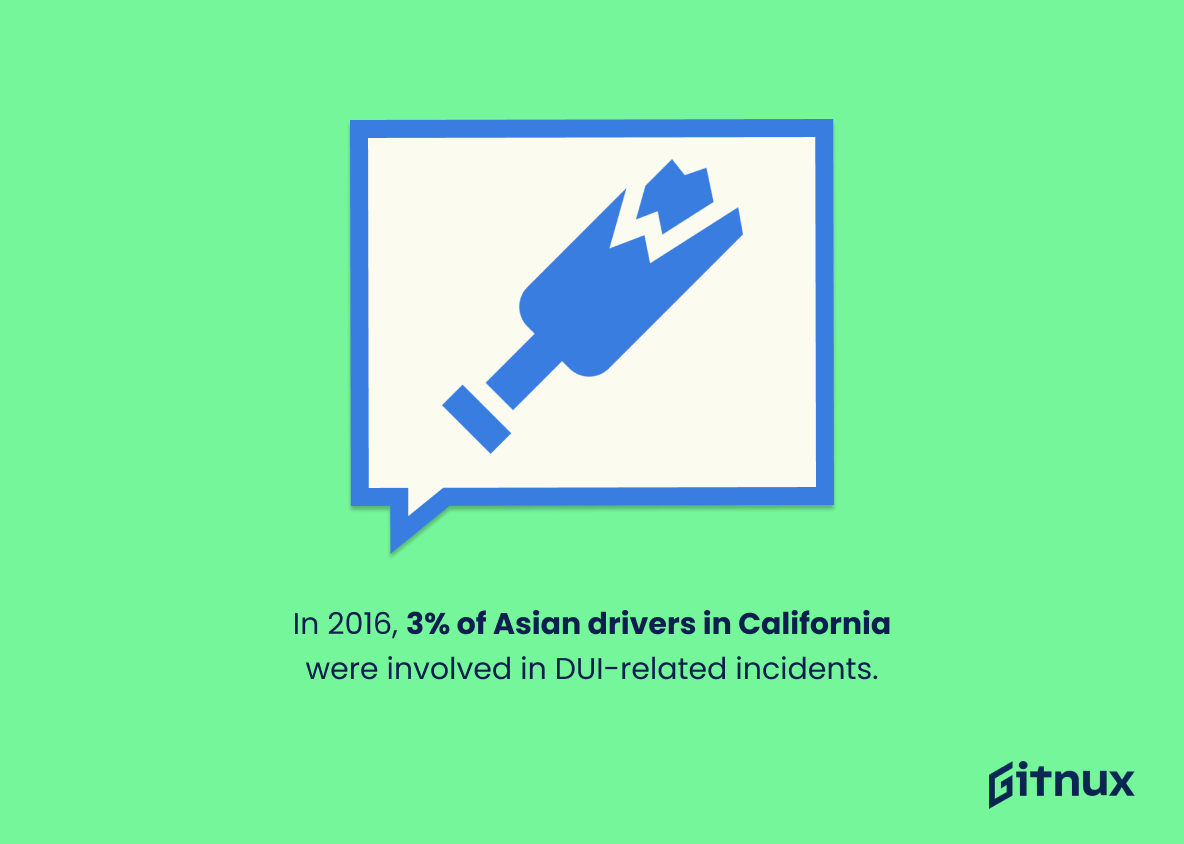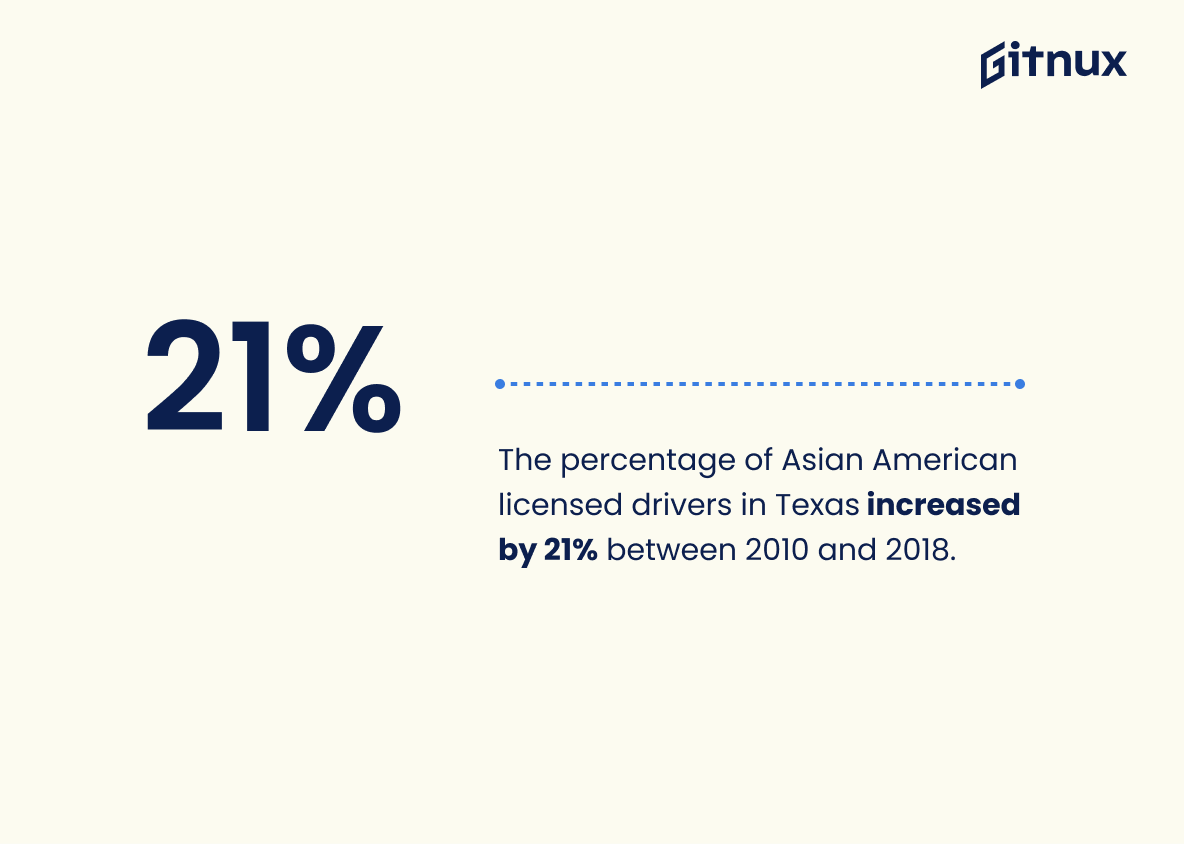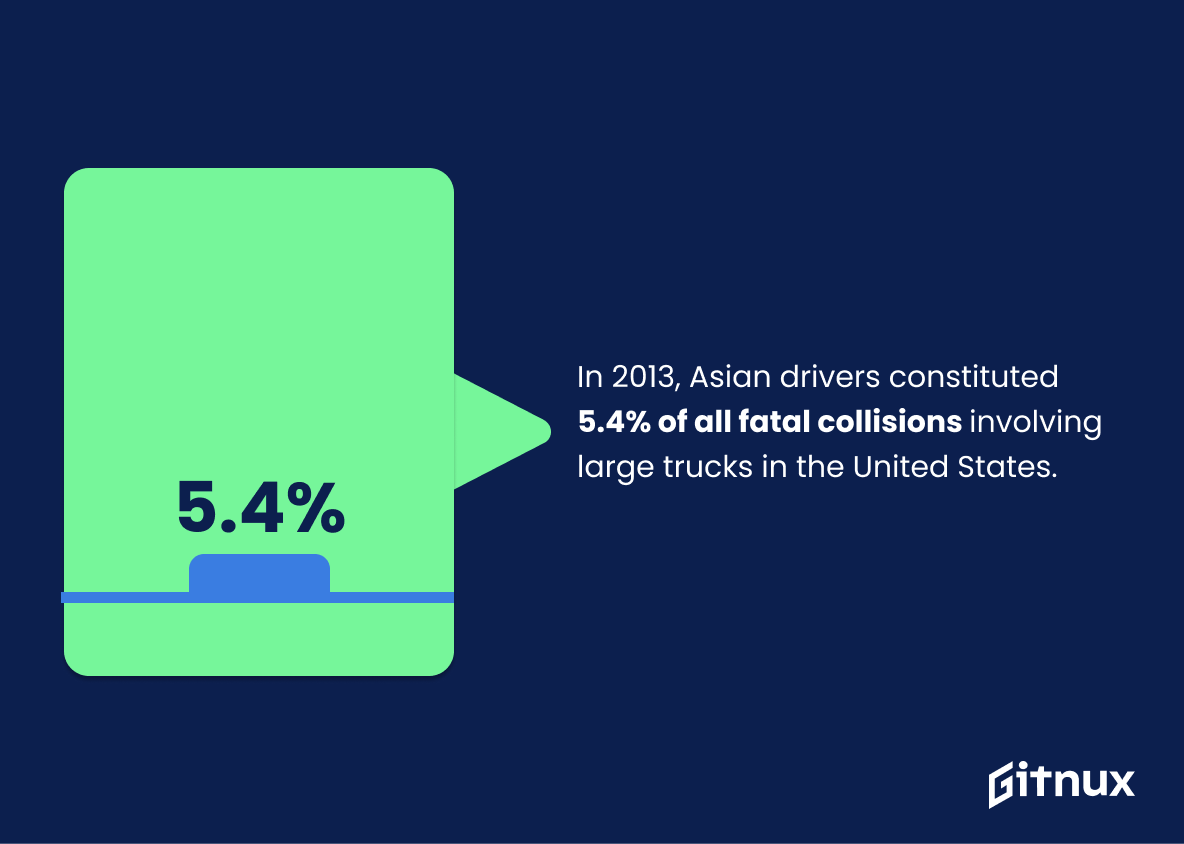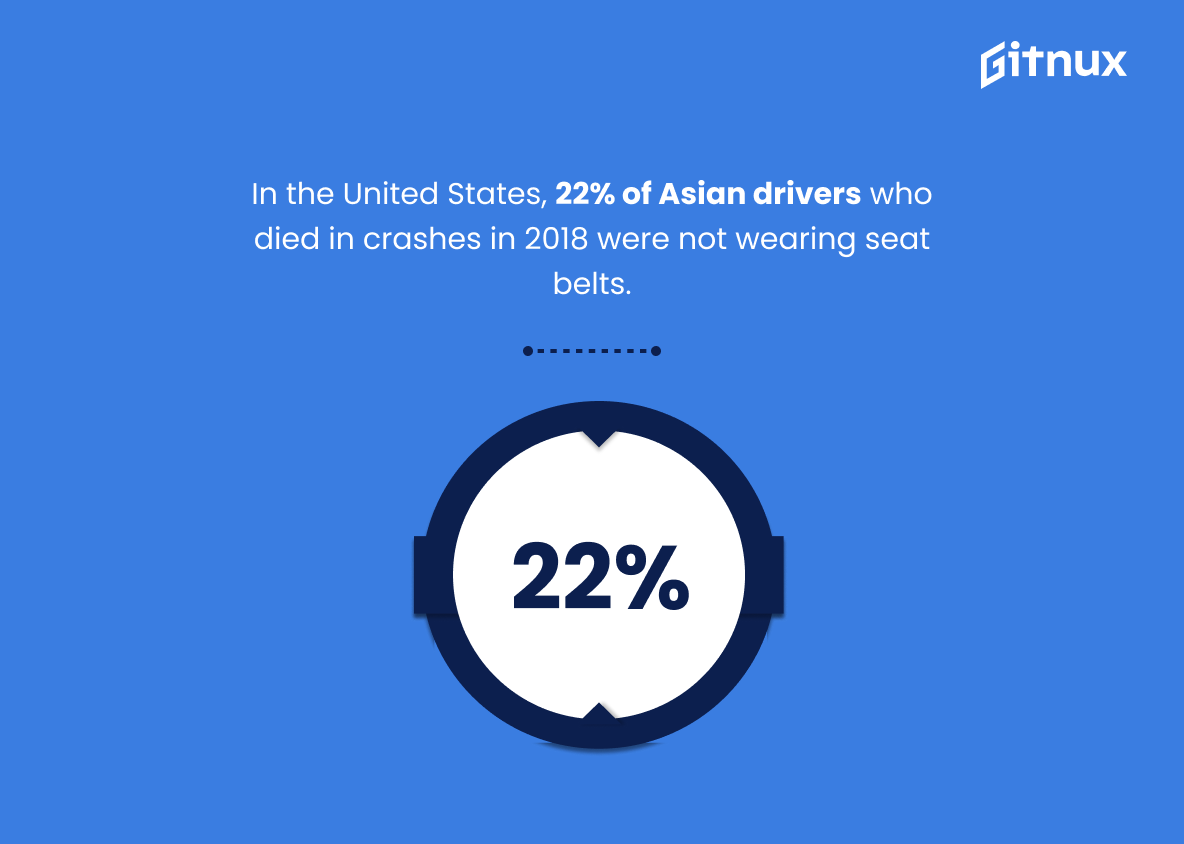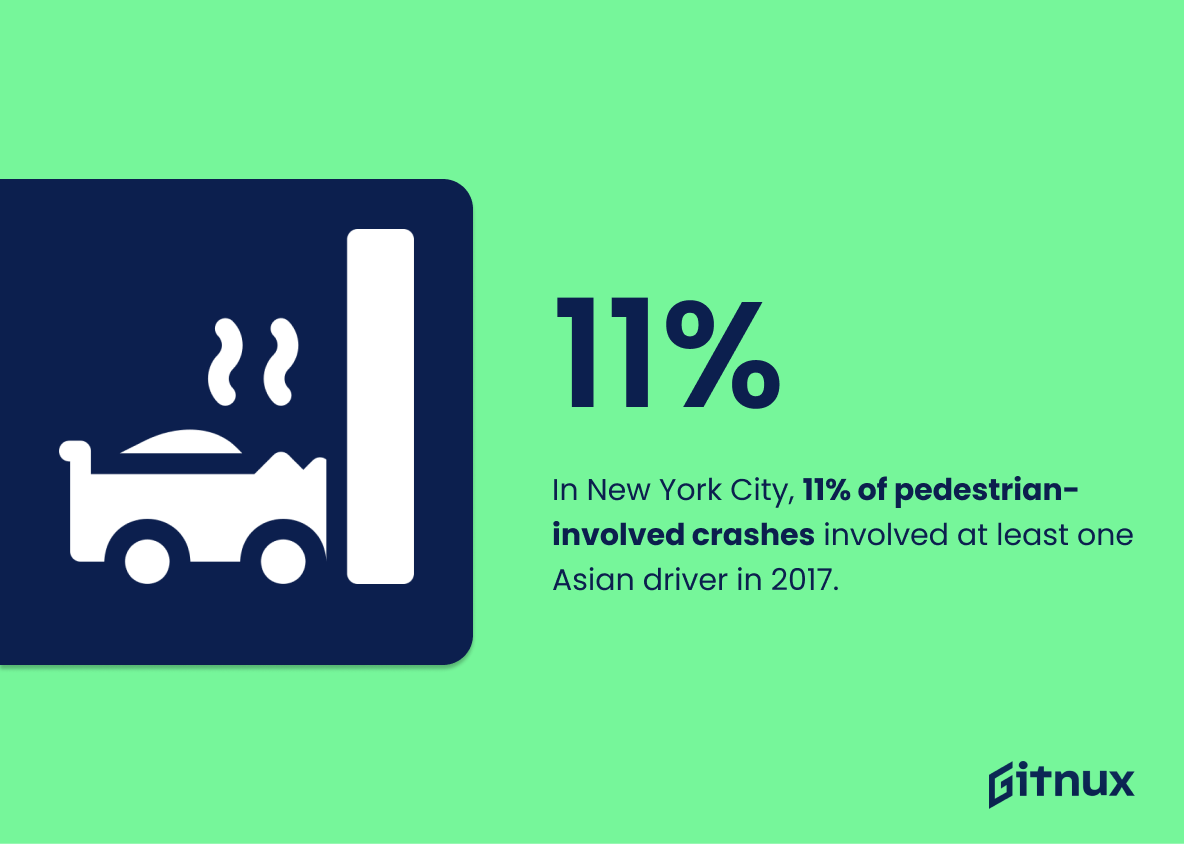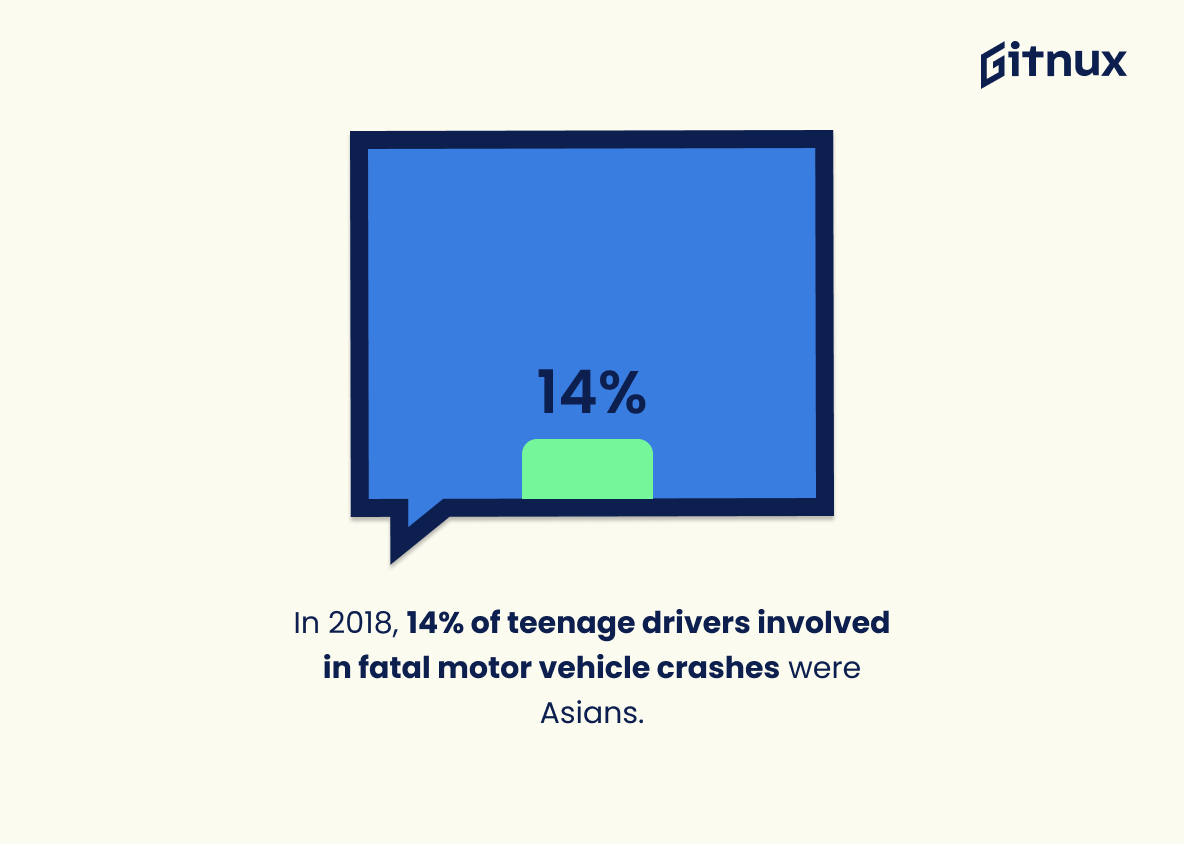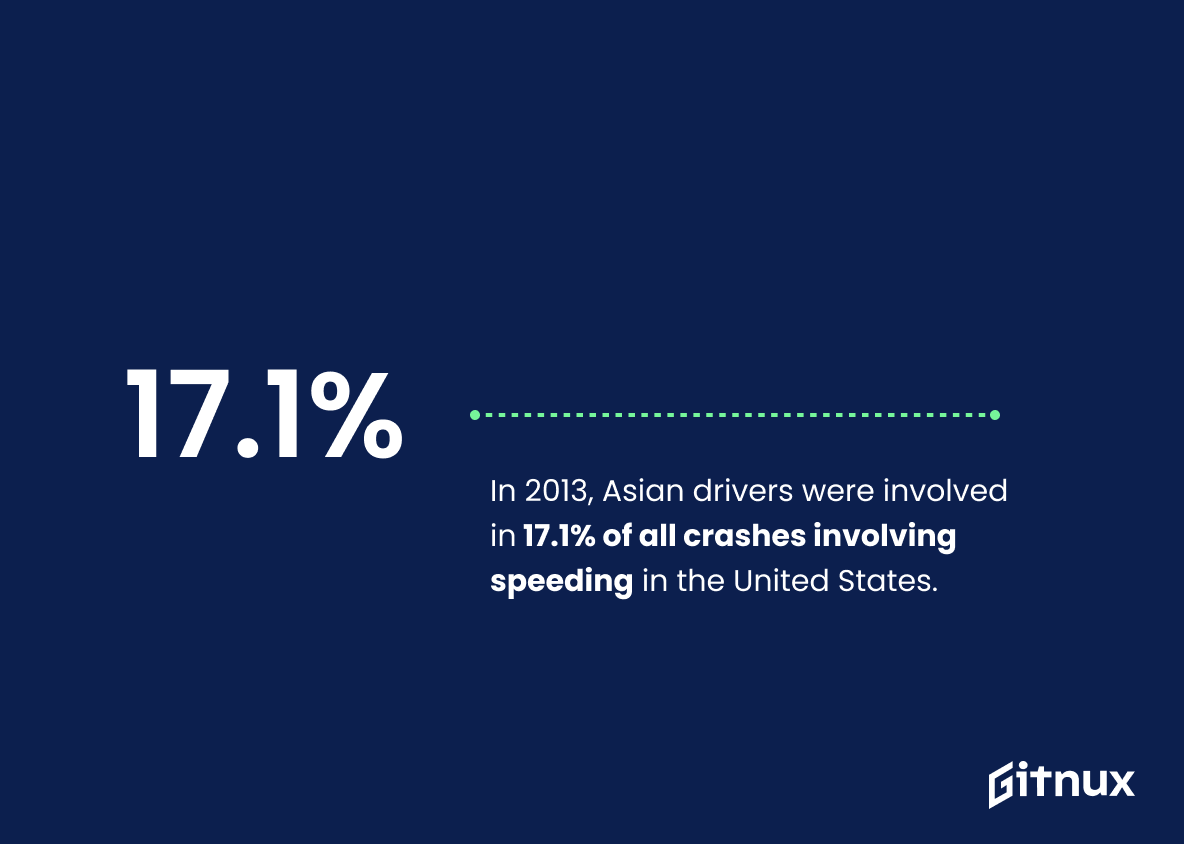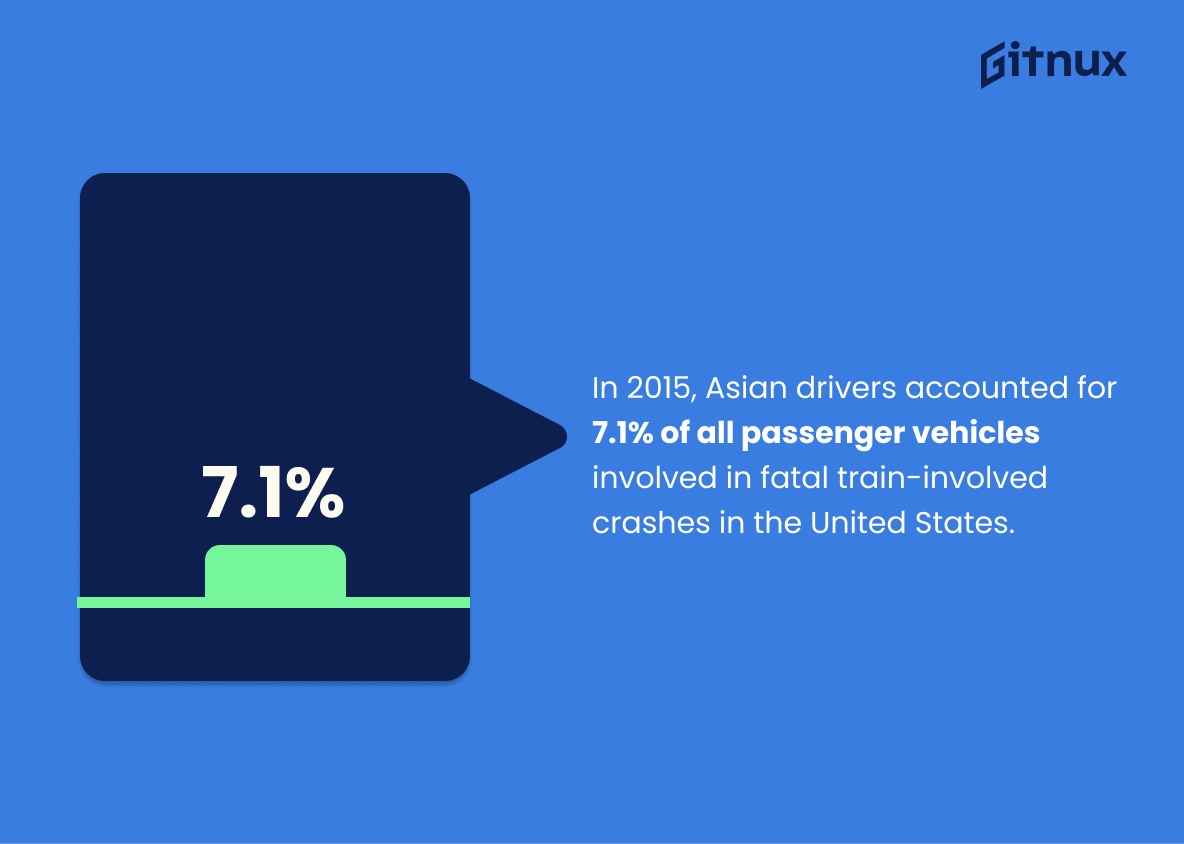Asians are an increasingly important part of the driving population in many countries around the world. This blog post will explore statistics related to Asian drivers, including their involvement in motor vehicle accidents and fatalities, seat belt use rates, DUI-related incidents, and more. We’ll look at data from sources such as the US Department of Transportation’s Bureau of Transportation Statistics (BTS), National Highway Traffic Safety Administration (NHTSA), Federal Motor Carrier Safety Administration (FMCSA) and other organizations. By examining these numbers we can gain a better understanding of how Asians fit into today’s transportation landscape.
This statistic is a telling indication of the growing presence of Asians in the US motor vehicle market. It highlights the fact that Asians are increasingly becoming a major force in the automotive industry, and that their influence is only likely to grow in the years to come. This is an important point to consider when discussing Asian Drivers Statistics, as it provides a valuable insight into the current and future trends of the industry.
The fatality rate for Asians and Pacific Islanders in motor vehicle crashes was 3.56 per 100,000 people in 2017.
This statistic is a stark reminder of the dangers that Asian and Pacific Islanders face on the roads. It highlights the need for increased awareness and safety measures to protect this community from motor vehicle crashes. It also serves as a call to action for policy makers to take steps to reduce the fatality rate for this group.
Asian Drivers Statistics Overview
Asian immigrant drivers made up 25.7% of all new driver’s licenses issued in California between 2010 and 2018.
This statistic is a powerful indicator of the impact Asian immigrants have had on the driving population in California over the past decade. It speaks to the growing presence of Asian immigrants in the state and their contribution to the overall driving population. It also highlights the importance of recognizing the diversity of the driving population and the need for policies that support and protect all drivers, regardless of their background.
Vehicle ownership among Asian American households increased by 7.6% between 2009 and 2013.
This statistic is a testament to the growing presence of Asian American households on the roads. It highlights the fact that Asian Americans are increasingly taking to the wheel, and that their presence in the driving population is growing. This is an important statistic to consider when discussing Asian Drivers Statistics, as it provides insight into the changing dynamics of the driving population.
In San Francisco, Asian drivers were 13% more likely to be involved in crashes at night than non-Asian drivers.
This statistic is a stark reminder of the dangers that Asian drivers face when driving at night in San Francisco. It highlights the need for increased safety measures and awareness of the risks associated with driving at night for Asian drivers. It also serves as a call to action for the city to take steps to ensure that all drivers, regardless of race, are able to drive safely and without fear of being involved in a crash.
Vehicle miles traveled (VMT) for Asians in the United States increased by 30% between 2001 and 2009.
This statistic is a telling indication of the growing presence of Asian drivers on the roads. It speaks to the increasing number of Asian drivers who are taking to the roads and the growing confidence they have in their driving abilities. It also reflects the growing number of Asian-Americans who are choosing to drive, which is a positive sign for the future of Asian-American drivers. This statistic is a testament to the progress that has been made in the last decade in terms of Asian-American drivers and their increasing presence on the roads.
In the United States, Asian drivers aged 15-29 were involved in 8.3% of all fatal crashes in 2015.
This statistic is a stark reminder of the dangers that Asian drivers aged 15-29 face on the roads. It highlights the need for increased safety measures and education to ensure that these drivers are better equipped to navigate the roads safely. It also serves as a call to action for policy makers to take steps to reduce the number of fatal crashes involving Asian drivers in the United States.
In the United States, 73% of Asian drivers consistently used seat belts in 2018.
This statistic is significant in the context of Asian drivers statistics because it demonstrates the commitment of Asian drivers to safety. It shows that the majority of Asian drivers are taking the necessary precautions to protect themselves and others on the road. This is an important reminder that safety should always be a priority when driving, regardless of ethnicity.
In 2016, 3% of Asian drivers in California were involved in DUI-related incidents.
This statistic is a stark reminder of the dangers of driving under the influence, particularly for Asian drivers in California. It highlights the need for increased awareness and education about the risks of driving while impaired, as well as the importance of making sure that all drivers are aware of the laws and regulations regarding driving under the influence.
The percentage of Asian American licensed drivers in Texas increased by 21% between 2010 and 2018.
This statistic is a testament to the progress made by Asian American drivers in Texas over the past eight years. It highlights the fact that Asian American drivers have become increasingly more visible on the roads, and that their presence is growing. This is an important statistic to consider when discussing Asian American drivers, as it shows that they are becoming more accepted and respected in the driving community.
In 2013, Asian drivers constituted 5.4% of all fatal collisions involving large trucks in the United States.
This statistic is a stark reminder of the dangers that Asian drivers face on the roads when it comes to large trucks. It highlights the need for increased safety measures and awareness when it comes to Asian drivers and large trucks, as well as the need for further research into the causes of these collisions.
In the United States, 22% of Asian drivers who died in crashes in 2018 were not wearing seat belts.
This statistic is a stark reminder of the importance of wearing seat belts while driving, particularly for Asian drivers. It highlights the need for increased awareness and education about the importance of seat belt safety, as well as the need for more stringent enforcement of seat belt laws. It also serves as a warning to Asian drivers to take extra precautions when driving, as they are more likely to be involved in fatal crashes if they are not wearing seat belts.
In New York City, 11% of pedestrian-involved crashes involved at least one Asian driver in 2017.
This statistic is a telling indication of the prevalence of Asian drivers in pedestrian-involved crashes in New York City in 2017. It serves as a reminder that Asian drivers are an important part of the driving population and should be taken into account when discussing road safety.
In 2018, 14% of teenage drivers involved in fatal motor vehicle crashes were Asians.
This statistic is a stark reminder of the dangers that Asian teenage drivers face on the roads. It highlights the need for increased awareness and education about safe driving practices among Asian teens, as well as the need for better enforcement of traffic laws. It also serves as a call to action for parents and guardians to ensure that their Asian teenage drivers are properly trained and equipped to handle the roads.
In 2013, Asian drivers were involved in 17.1% of all crashes involving speeding in the United States.
This statistic is a stark reminder of the dangers of speeding, particularly for Asian drivers. It highlights the need for greater awareness of the risks associated with driving at excessive speeds, and the importance of taking steps to reduce the number of crashes involving speeding. It also serves as a reminder that Asian drivers are disproportionately affected by speeding-related crashes, and that more needs to be done to ensure their safety on the roads.
In 2015, Asian drivers accounted for 7.1% of all passenger vehicles involved in fatal train-involved crashes in the United States.
This statistic is a stark reminder of the dangers that Asian drivers face on the roads. It highlights the need for increased safety measures and education for Asian drivers, as well as greater awareness of the risks they face. It also serves as a call to action for policy makers to take steps to reduce the number of fatal train-involved crashes involving Asian drivers.
Conclusion
The statistics presented in this blog post demonstrate that Asian drivers are a significant presence on the roads of the United States, Canada, Australia and other countries. They make up a large portion of new driver’s licenses issued, vehicle ownerships among households and fatalities from motor vehicle crashes. Additionally, they have higher rates for certain risky behaviors such as speeding or not wearing seat belts while driving. These numbers show that it is important to consider Asian drivers when discussing road safety initiatives and policies around the world.
References
0. – https://www.nsc.org
1. – https://www.fra.dot.gov
2. – https://www.wsws.org
3. – https://www.dmv.ca.gov
4. – https://www.cdc.gov
5. – https://www..nyc.gov
6. – https://www.fars.nhtsa.dot.gov
7. – https://www.transportation.gov
8. – https://www.iihs.org
9. – https://www.safety.fhwa.dot.gov
10. – https://www.ncbi.nlm.nih.gov
11. – https://www.dps.texas.gov
12. – https://www.fmcsa.dot.gov
13. – https://www.nhtsa.gov
14. – https://www.bts.gov
